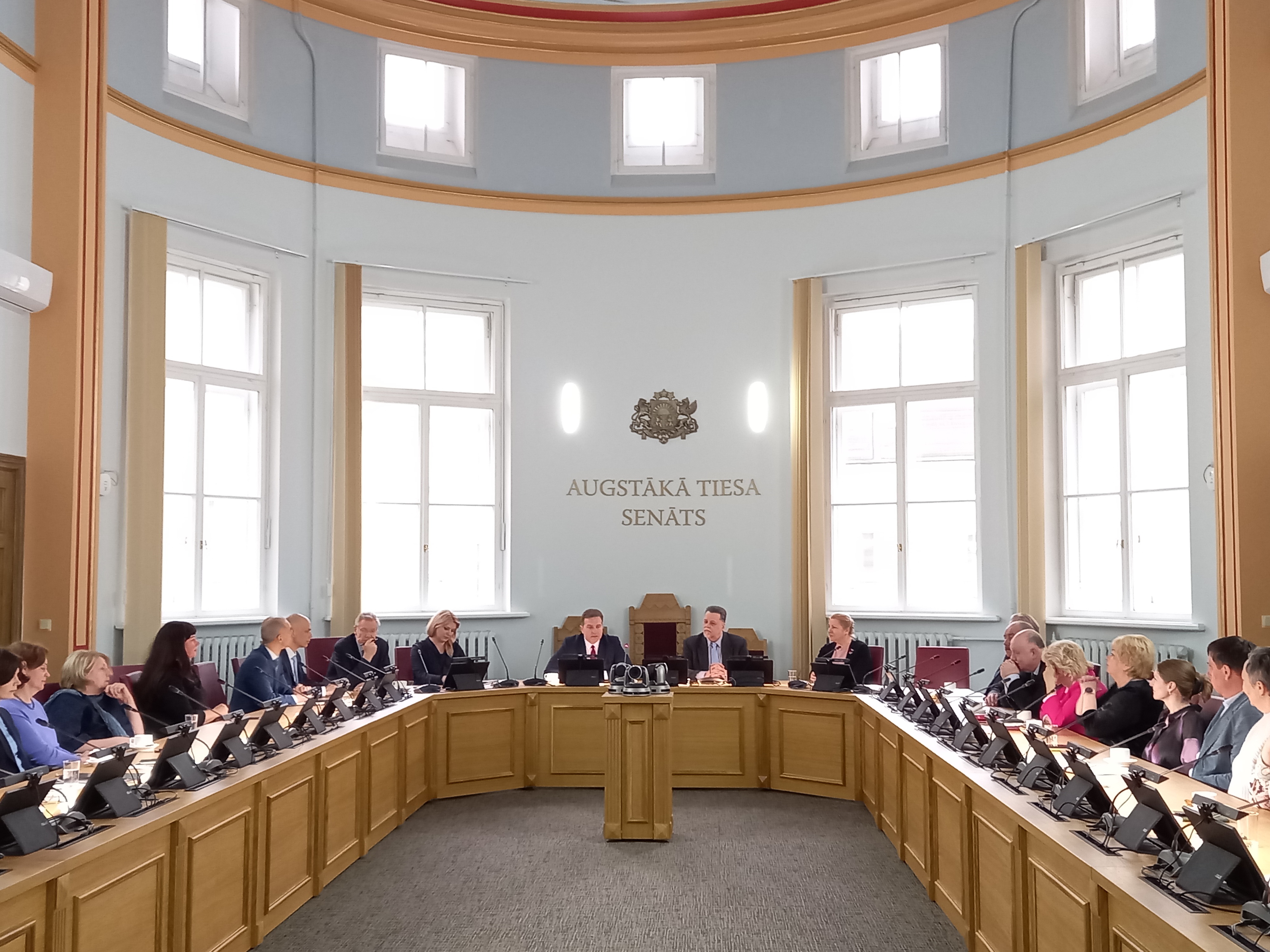3 April, 2024
On April 3, in order to strengthen the judicial dialogue, judges of the Supreme Court and the Constitutional Court met to discuss the area of responsibility of both courts in the application of the Constitution and in drafting applications to the Constitutional Court.
General jurisdiction courts and administrative courts submit applications regarding the compliance of specific legal norms with the Constitution to the Constitutional Court not in their own interests, but in the interests of justice, therefore the Constitutional Court should initiate proceedings following these applications. This happens for the most part, especially with Senate’s applications, but there are also refusals. This conversation of judges focused on the applicable legal method and legal arguments so that the applications would meet the requirements of the Constitutional Court. Moreover, the arguments contained in court applications bear special importance, because in these cases there are no other arguments to support the application – the Constitutional Court shall work with what the courts have written. Consequently, the outcome of a case largely depends on the statement of reasons contained in the court application.
As the judges of both courts emphasized during the conversation, each court has its own area of responsibility: the Constitutional Court decides on the regulatory framework of the application of legal norms, however the application of legal norms in accordance with the Constitution is the area of expertise of the other courts. The Constitutional Court, without special exceptions, does not interfere in matters of application of the law, therefore a court must be able to demonstrate that all the possibilities of application and interpretation of the law have been exhausted, and there is no other way to achieve a fair result than the evaluation of a legal norm in accordance with the fundamental rights defined in the Constitution. Furthermore, the task of the courts is becoming even more complicated – the jurisprudence of the Court of Justice of the European Union must also be taken into account when resolving national courts cases.
The judges of both courts also discussed individual specific applications and solutions to court cases, as well as addressed the concept of the general administrative act.
The issues of judicial training were also discussed during the meeting. If two years ago there was not a single lesson on the drafting of applications to the Constitutional Court in the training programme of judges, then now the Latvian Judicial Training Centre has a working group for fundamental rights, in which the Constitutional Court also participates. As the judges pointed out, the training course should not focus on the topicalities of the Constitutional Court, but on the method of creating a dialogue with the Constitutional Court.
Aigars Strupišs, the President of the Supreme Court, stated that despite the differences in the jurisdiction and functions of the courts, the dialogue between the Constitutional Court and the Supreme Court is an important tool for combining legal theory and practice and also for strengthening the judiciary in general. In addition, the dialogue should take place not only via judgments, but also in on-site discussions, which then give direction to the further train of thought.
Information prepared by
Rasma Zvejniece, the Head of the Division of Communication of the Supreme Court
E-mail: rasma.zvejniece@at.gov.lv, telephone: +371 67020396, +371 28652211


